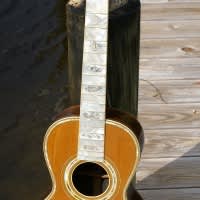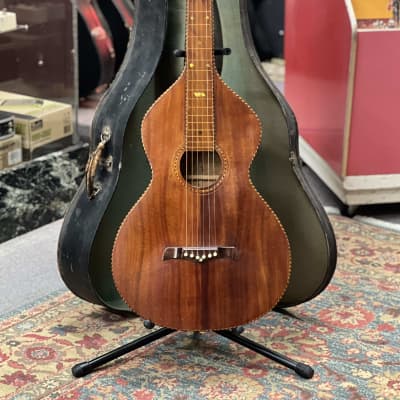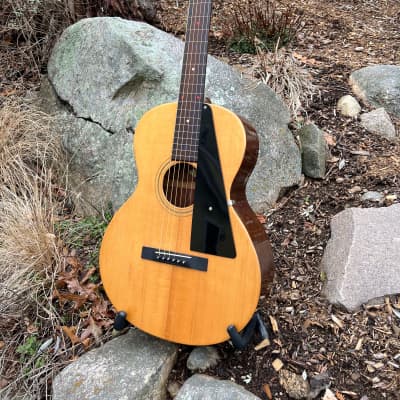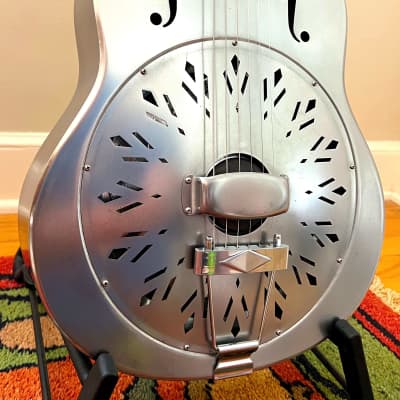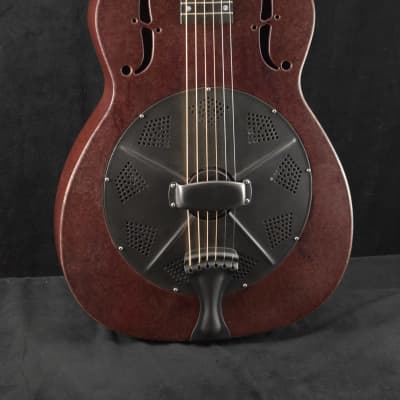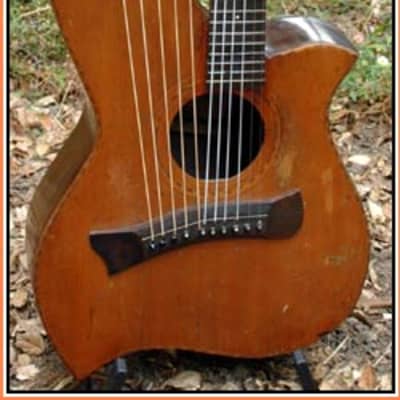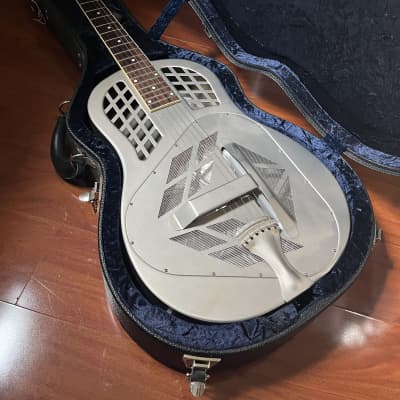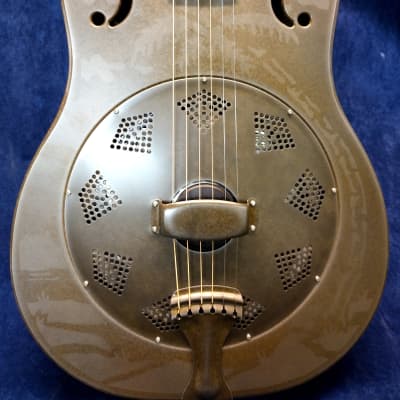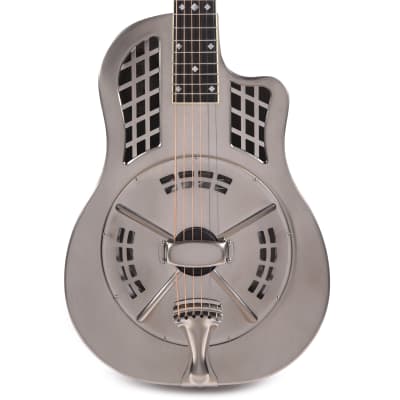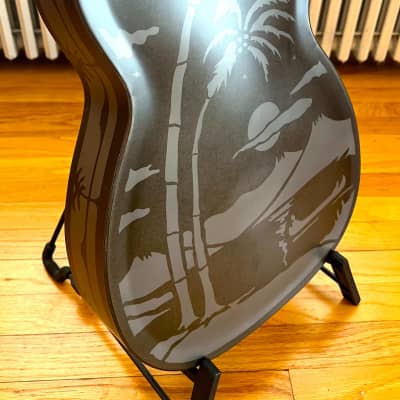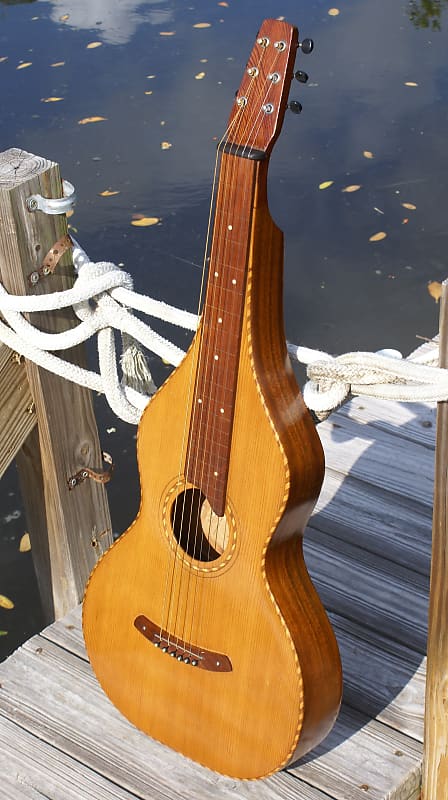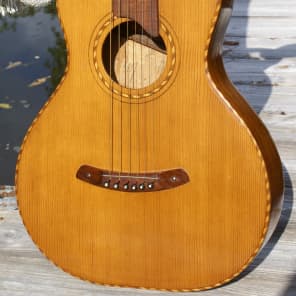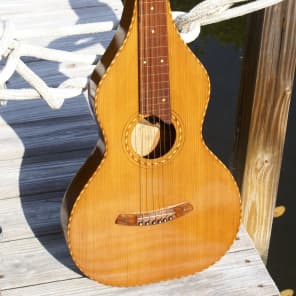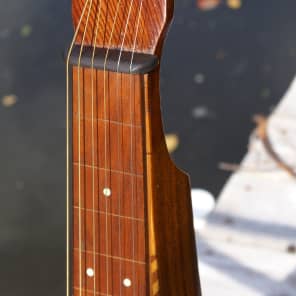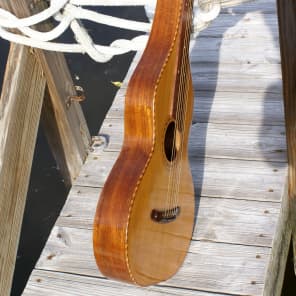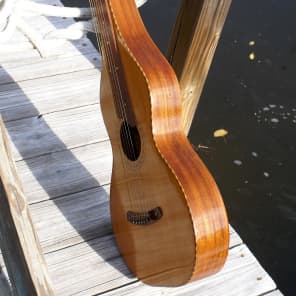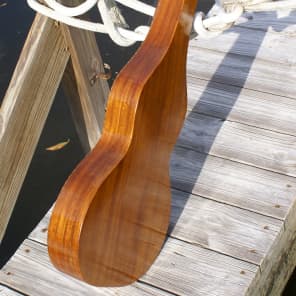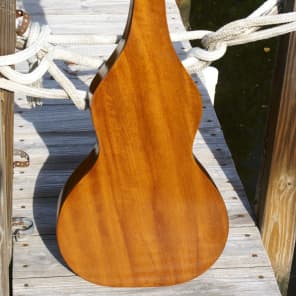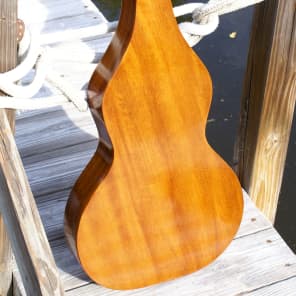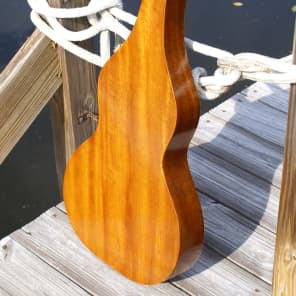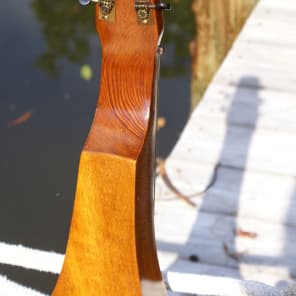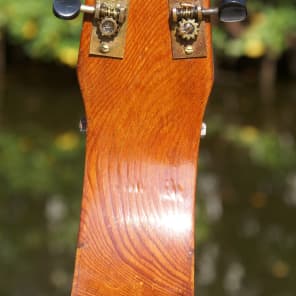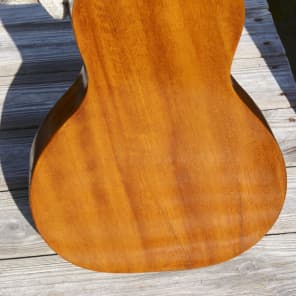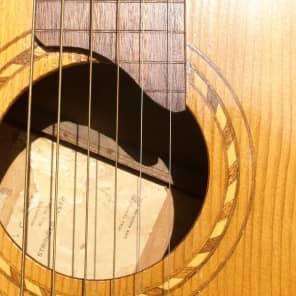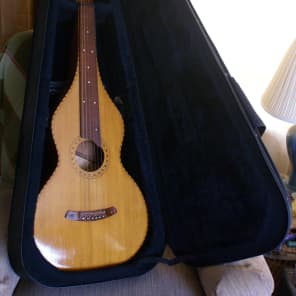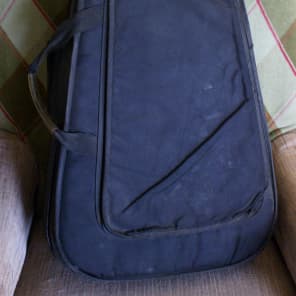SJ: Was Hermann Weissenborrn the originator of the
hollow-necked steel guitar? TN: The first
hollow-necked steel guitar as we know it was created by Chris Knutsen in
approximately 1909. Knutsen was known for his amazing resonant harp guitars,
which had a hollow arm projecting from the upper bass bout and supporting
sub-bass strings. Knutsen realized that if he “straightened” the harp arm and
made a hollow box-like structure for the neck, he could make a steel guitar
with improved sound quality. Weissenborn's
name is now associated primarily with the hollow-neck Hawaiian guitars that
bear his stamp, but these were originally designed by Chris Knutsen. Around
1923, Weissenborn organized a large workshop for the production of these
instruments and that appears to be when he took over Kona production as
well.
My research shows
this guitar is likely circa 1920 as that’s the date showing Knutsen’s shop at
1542 Temple St, Los Angeles, the address printed on the original label pasted
inside the soundhole.
However, this
same guitar was listed circa 1914 when Emerald City Guitars had it. https://reverb.com/item/288963-chris-knutsen-hollow-hawaiian-1914-natural
In 1914, Chris’ son-in-law lived at 1413 Temple St.. Chris may have set up his
shop at 1542 Temple as early as 1917, but that address wasn’t found mentioned
until 1920. His shop was listed there until at least 1927, ’27 being the year
Chris moved in with his daughter. He lived with her until his passing in 1930.
24 7/8” scale. Body
length – 37”. Body depth at end pin – 3 ¼” tapering to 2 ½” at neck. Width, at
lower bout – 14 15/16”, upper bout – 9 3/8”.
This guitar with
its well aged woods is quite lightweight at 3 lbs. For comparison, my
Weissenborns weigh from 4 lbs 1 oz to 4 lbs 12 oz. a caveat is the Weissenborns
I’ve kept are larger wider bodied.
The top is
Spruce. Back and sides, Koa. Neck, Fretboard, bracing and Bridge, Mahogany.
The tone is
famous. Think Stradivarius. Only well aged tone woods can impart such deeply
resonant tones. Made by the originator, a renowned craftsman who the better
known Weisenborn hired and copied; This guitar is in exemplary original condition.
It plays & sounds dreamlike.
It comes with a
hard bodied fitted case covered with ballistic cloth.
A bit more
history - The 'Kona' trademark belonged to C. S. Delano, who was one of the
first instructors of the Hawaiian steel guitar in the continental US. Delano
claimed to have studied with Joseph Kekuku, billed as the inventor of the
Hawaiian technique, and opened his own teaching studio in Los Angeles in the
early 1910's. As with many other teachers, it soon occurred to Delano that it would
be a smart idea to have custom instruments for sale to students to supplement
the studio's income. At some point, Delano had come upon the work of incredibly
creative if highly eccentric Seattle luthier Chris Knutsen who was
experimenting with a 'convertible' guitar which could be played in either the
Spanish or Hawaiian styles. Knutsen's design involved an adjustable neck with a
screw bracket to change the fingerboard angle, but either he or Delano soon
realized that an adjustment of the nut height was all that was really needed.
The first few known Konas were built by Knutsen, who moved down to Los Angeles
around this time. Despite his creative genius, Knutsen's craftsmanship was
eccentric at best and he was never interested in getting involved in quantity
production so his designs are now mostly remembered by other names. After
having some of his distinctive Konas built by another Los Angeles concern, the
Schireson Brothers, Delano eventually settled on Herman Weissenborn as the
supplier of his custom brand instruments.
Chris Knutsen was a harp guitar, harp mandolin, ukulele, and steel guitar maker
living in Port Townsend, WA between the years of 1895 and 1900. He then moved
to Tacoma through 1906 when he moved to Seattle. 1914 places him in Los
Angeles, CA. He was at the forefront of harp guitar making at that time and also
a pioneer in Hawaiian steel guitars, influencing and his
design of Hawaiian guitars (famously played by David Lindley, John Fahey, Bob
Brozman, Rusty Young, Tom Noe, Ben Elder, Jon Kellerman, Kevin Fairfield &
Gregg Miner as well as others with an appreciation for such full-bodied
resonance that full hollow bodies with select aged woods can depart). While in
Port Townsend, showed
us a pamphlet on Mr. Knutsen. She already knew of our interest in harp guitars;
but we also found harp ukuleles and harp mandolins had been made by Mr. Knutsen.
*Please see our
other listings and store for many other Vintage (Lap Steel) Guitars and
Amplifiers. We currently have Alamos, Audio Vox, Bronsons, Dickersons, Dobros,
English, Epiphones, Fenders, Gibsons, Harlin Bros, Harmonys, Kays, Maestros,
Magnatones, McKinney, Nationals, Oahus, Rickenbachers, Sho Bud, Silvertones,
Supertones, Supros, Vegas, and White Lap Steels as well as several others.
We've been in the guitar business for over 50 years. We encourage you to contact
us with any questions or comments*
*We also accept
Cashier's Checks, Bank Transfers & other forms of payment. We ship
(worldwide) at cost. Please contact for information.*
